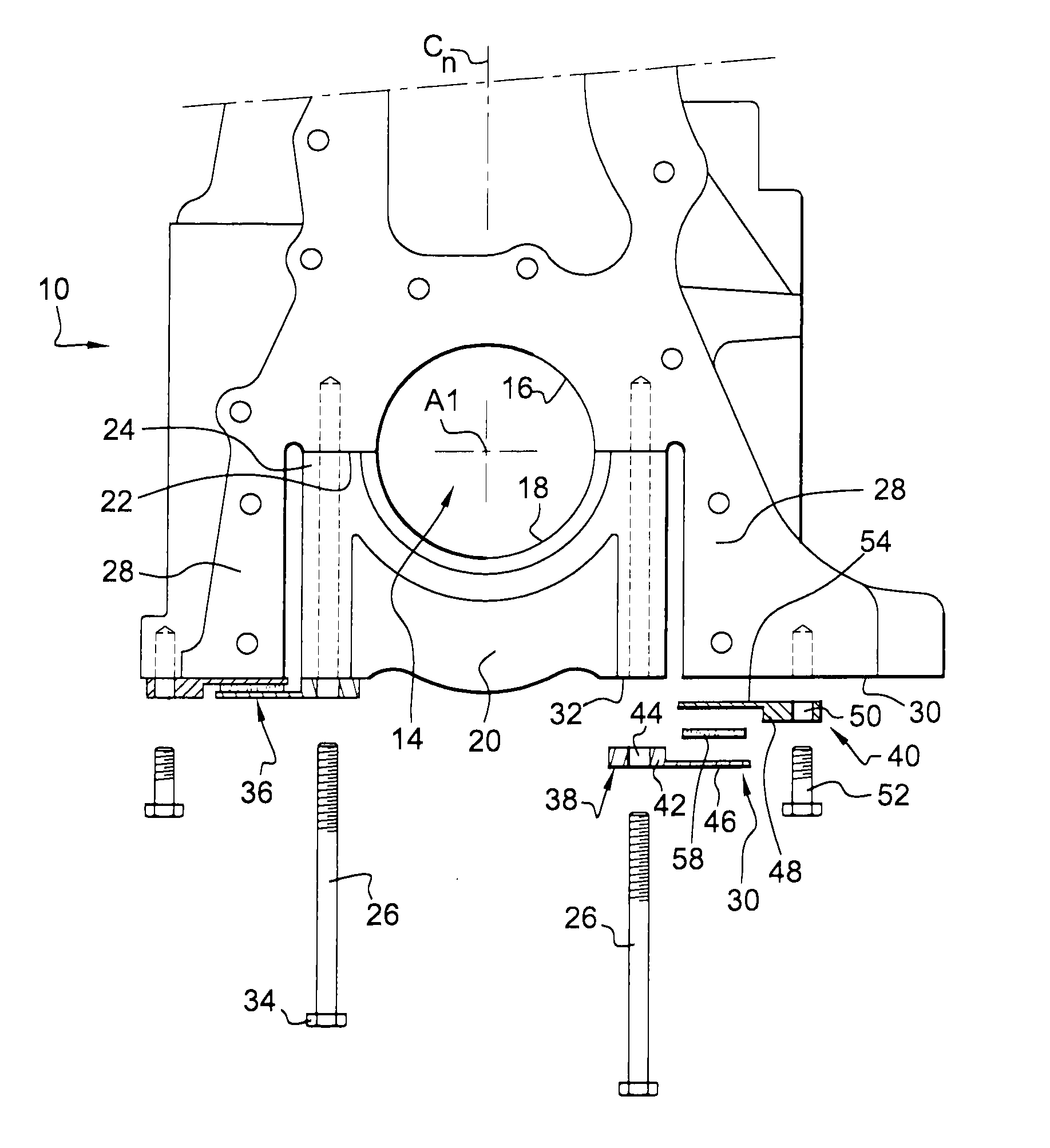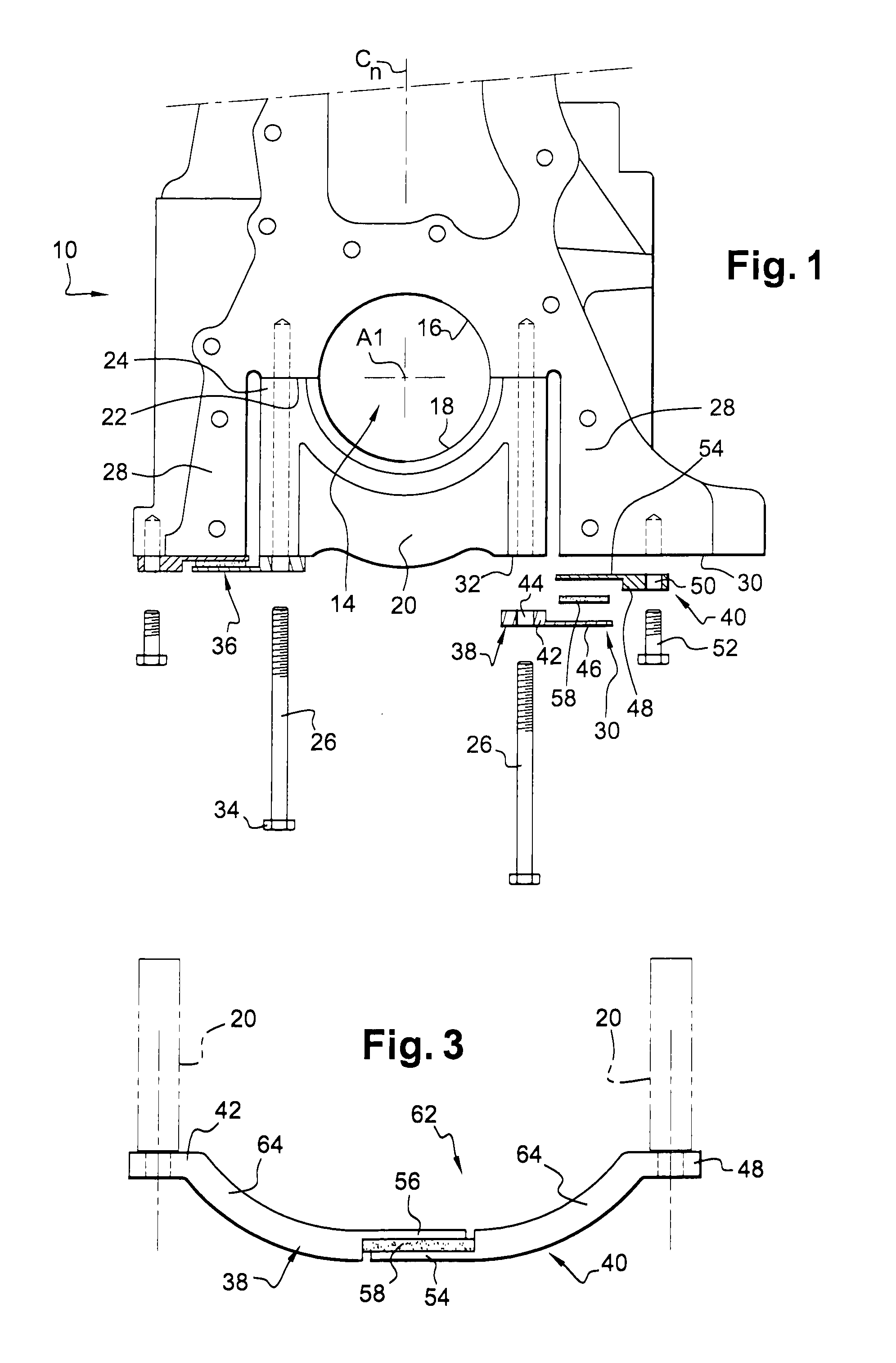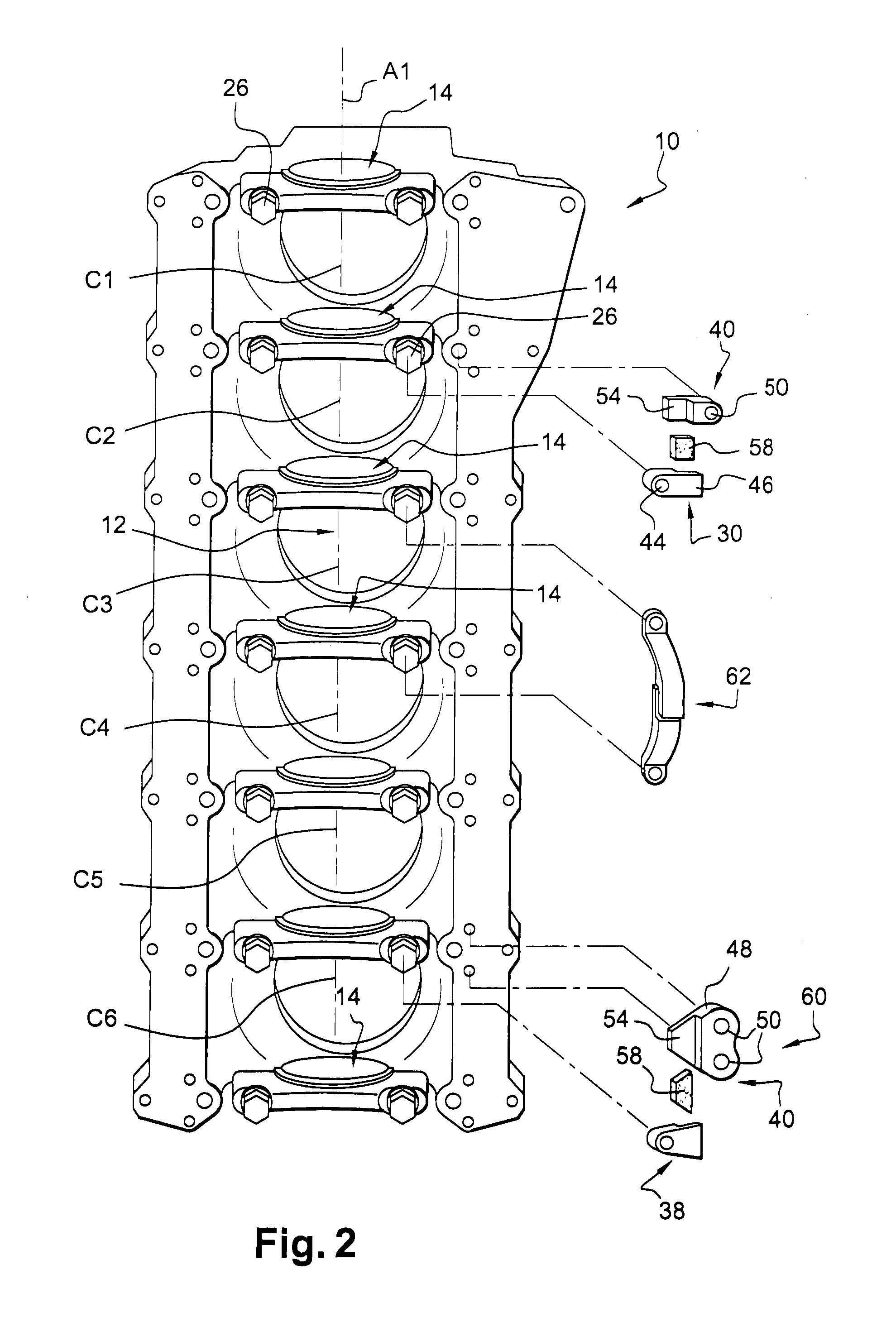Improved internal combustion engine with bearing cap dampening
a technology of dampening and internal combustion engine, which is applied in the direction of machines/engines, mechanical equipment, and casings, etc., can solve the problems of generating even more noise, generating noise, and generating medium to high frequency vibration in the engine structure, and achieves reasonable cost and vibration dampening
- Summary
- Abstract
- Description
- Claims
- Application Information
AI Technical Summary
Benefits of technology
Problems solved by technology
Method used
Image
Examples
first embodiment
[0024]According to this first embodiment, the first 38 and second 40 support portions of the dampening structure 36 extend essentially in the transverse direction and are each fastened respectively on the bearing caps 20 and on the cylinder block by one bolt, the two bolts being transversely spaced apart. Advantageously, the bolt for fastening the first support portion 38 on the bearing cap is one of the two fixing bolts 26 which holds the bearing cap 20 on the cylinder block, so that the first support portion 38 is in fact sandwiched between the bolt's head 34 and the lower surface 32 of the bearing cap 20. The first support portion 38 has a fixing section 42 having a certain thickness and showing a through-hole 44 for the passage of the bolt 26. A horizontal flange 46, having a reduced thickness compared to the fixing section 42, extends essentially transversally from said fixing section 42 so as to be in the continuity of the lower face thereof The second support portion 40 has a...
embodiment 66
[0036]On FIG. 5 is shown very schematically a further embodiment 66 of a dampening structure for an engine according to the invention. In this further embodiment, it can be seen that the cylinder block 10 has shorter sidewalls 28 than in the previous cases. Indeed, the lower edge surface 30 of at least one of the sidewalls (in this case of both sidewalls) is located at a higher level than the lower surface 32 of the bearing caps. Therefore, in this case, the flange sections 46, 54 of each of the first 38 and second portions of the dampening structure extend along a plane P which is inclined by an angle a with respect to a horizontal plane (and in this case angled with respect to the corresponding fixing section 42, 48). The degree of inclination a will depend on the difference of height between the lower edge surface 30 of the sidewalls and of the bearing caps. It will also depend on the height of the fixing sections of the dampening structure. In the embodiment shown, the fixing se...
PUM
 Login to View More
Login to View More Abstract
Description
Claims
Application Information
 Login to View More
Login to View More - R&D
- Intellectual Property
- Life Sciences
- Materials
- Tech Scout
- Unparalleled Data Quality
- Higher Quality Content
- 60% Fewer Hallucinations
Browse by: Latest US Patents, China's latest patents, Technical Efficacy Thesaurus, Application Domain, Technology Topic, Popular Technical Reports.
© 2025 PatSnap. All rights reserved.Legal|Privacy policy|Modern Slavery Act Transparency Statement|Sitemap|About US| Contact US: help@patsnap.com



